
Sir John Gilbert was an English artist, illustrator and engraver.
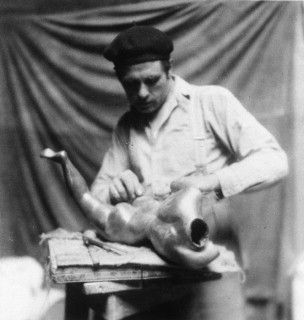
George Claude Leon Underwood was a British artist, although primarily known as a sculptor, printmaker and painter, he was also an influential teacher and promotor of African art. His travels in Mexico and West Africa had a substantial influence on his art, particularly on the representation of the human figure in his sculptures and paintings. Underwood is best known for his sculptures cast in bronze, carvings in marble, stone and wood and his drawings. His lifetime's work includes a wide range of media and activities, with an expressive and technical mastery. Underwood did not hold modernism and abstraction in art in high regard and this led to critics often ignoring his work until the 1960s when he came to be viewed as an important figure in the development of modern sculpture in Britain.
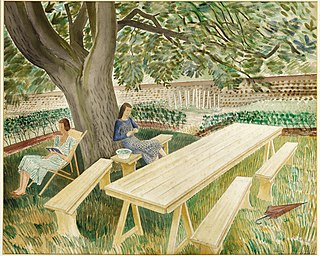
Eric William Ravilious was a British painter, designer, book illustrator and wood-engraver. He grew up in Sussex, and is particularly known for his watercolours of the South Downs, Castle Hedingham and other English landscapes, which examine English landscape and vernacular art with an off-kilter, modernist sensibility and clarity. He served as a war artist, and was the first British war artist to die on active service in World War II when the aircraft he was in was lost off Iceland.

John Raphael Smith was a British painter and mezzotinter. He was the son of Thomas Smith of Derby, the landscape painter, and father of John Rubens Smith, a painter who emigrated to the United States.
John Northcote Nash was a British painter of landscapes and still-lives, and a wood engraver and illustrator, particularly of botanic works. He was the younger brother of the artist Paul Nash.

George Barret Sr. was an Irish landscape artist known for his oil paintings and watercolours. He left Ireland in 1762 to establish himself as an artist in London and quickly gained recognition to become a leading artist of the period. He exhibited at the Society of Artists of Great Britain and was able to gain patronage from many leading art collectors. Barrett with other leading members left the Society in 1768 to found the Royal Academy, where he continued to exhibit until 1782.
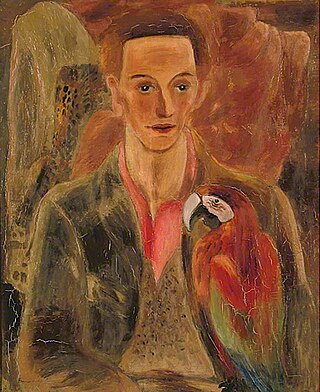
Sir Cedric Lockwood Morris, 9th Baronet was a British artist, art teacher and plantsman. He was born in Swansea in South Wales, but worked mainly in East Anglia. As an artist he is best known for his portraits, flower paintings and landscapes.
Garrick Salisbury Palmer was an English painter, wood engraver, photographer and teacher.
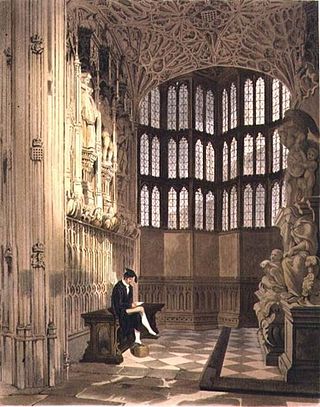
Thomas Uwins was a British portrait, subject, genre and landscape painter in watercolour and oil, and a book illustrator. He became a full member of the Old Watercolour Society and a Royal Academician, and held a number of high-profile art appointments including the librarian of the Royal Academy, Surveyor of Pictures to Queen Victoria and the Keeper of the National Gallery.
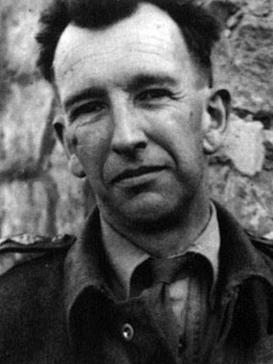
Blair Rowlands Hughes-Stanton was a major figure in the English wood-engraving revival in the twentieth century. He was the son of the artist Sir Herbert Hughes-Stanton. He exhibited with the Society of Wood Engravers, but was more in sympathy with the philosophy of the English Wood Engraving Society, of which he was a founding member in 1925. He co-directed the Gregynog Press from 1930 to 1933 with his wife, Gertrude Hermes.
E. M. O'R. Dickey was a wood engraver who was active at the beginning of the twentieth century. He was a founder member of the Society of Wood Engravers.

The Minories is a Grade II listed building and gardens situated at the east end of High Street in Colchester, Essex, England, near Hollytrees, Gate House and Colchester Castle. It currently houses The Minories Galleries.
Bernard Reynolds (1915–1997) was an esteemed East Anglian artist with a special interest in sculpting. He was born in Norwich and lived for almost fifty years in Ipswich. For although Reynolds is most widely known as a sculptor, he possessed the capacity to be an inspirational teacher as well as an artist, and he fulfilled both of these roles with his own particular kind of integrity. Reynolds was characterised for his quietly rigorous self-imposed discipline to every project he undertook – and due to his multiple pursuits, his projects were many and varied.
Colin William Moss was a British artist and teacher who served as a camouflage designer during World War Two.
James Dodds is an East Anglian artist whose practice centers on painting, linocut and relief carving. Born in Brightlingsea, Essex, he now lives and works in Wivenhoe producing prints and books as the Jardine Press. He is the son of East Anglian artist Andrew Dodds and has been described as "boatbuilding’s artist laureate".

Eileen Lucy "Tirzah" Garwood was a British wood-engraver, painter, paper marbler, author, and a member of the Great Bardfield Artists.

Henry William Collins and Joyce Millicent Pallot were two artists who lived and worked together for over 60 years. They are best known for their work on a number of large-scale public concrete murals during the 1960s and 1970s, many of which remain around the UK today. Their mural work often included elements relating to the cultural and industrial heritage of the location they were sited and is part of a tradition of muralists that includes William Mitchell and Kenneth Budd amongst others. Henry Collins and Joyce Pallot were both prominent members of the Colchester Art Society and exhibited together on a number of occasions.
Colchester Art Society was founded in 1946 by a group of artists who lived in Colchester and the nearby areas, many of whom were also linked to the Colchester School of Art, which is part of Colchester Institute. The aim of the society was and still is the promotion of the visual arts.

Nikolaos Ventouras was a Greek artist and engraver.
Rona Ina Dyer was a New Zealand artist, working in wood-engraving, watercolours and oils. Her work was used to illustrate books and is also held in the permanent collections of Sarjeant Gallery in Whanganui and Christchurch Art Gallery. She was also known for mural design and painting.










